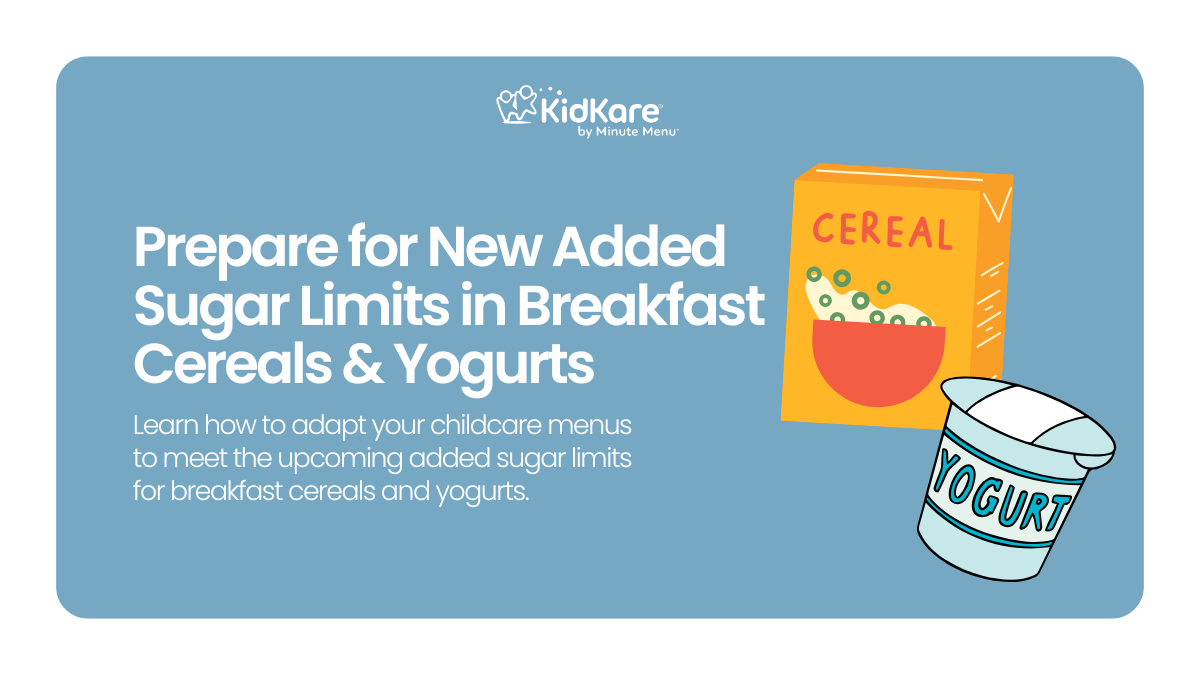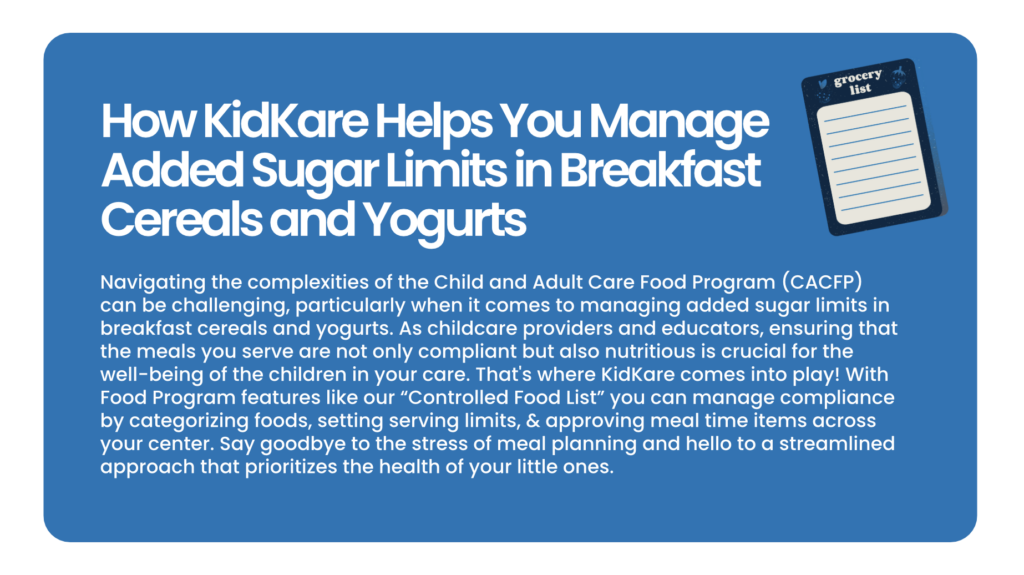
As the landscape of nutritional guidelines evolves, childcare providers must adapt to new regulations that ensure children receive healthier meals. One significant change coming into effect is the updated added sugar limits for breakfast cereals and yogurts under the Child and Adult Care Food Program (CACFP). With the implementation date set for October 1, 2025, it is crucial for childcare providers to understand these changes, prepare their menus accordingly, and communicate effectively with parents and caregivers. This article will guide you through the essentials of these new sugar limits, practical strategies for compliance, and tips for making the transition smoother for everyone involved.
The USDA’s Final Rule, announced on April 24, 2024, shifts the focus from total sugars to added sugars in breakfast cereals and yogurts. This change aligns with the dietary guidelines established for the National School Lunch Program and the School Breakfast Program. The new limits are designed to promote healthier eating habits among children, reducing their overall sugar intake.
Under the new guidelines, breakfast cereals served in the CACFP must contain no more than 6 grams of added sugars per dry ounce. This means that when selecting cereals, providers need to pay close attention to the nutritional information displayed on the packaging.
For yogurts, the limit is set at 12 grams of added sugars per 6 ounces (equivalent to 2 grams of added sugars per ounce). This regulation aims to ensure that children are consuming yogurt products that contribute positively to their nutritional needs without excessive sugar.
To ensure compliance with the new regulations, it’s essential to know how to identify added sugar limits effectively. Here are practical methods for both cereals and yogurts:
Referencing the Special Supplemental Nutrition Program for Women, Infants, and Children (WIC) approved breakfast cereal list can be a straightforward way to identify compliant options. This list includes cereals that meet the added sugar criteria, simplifying the selection process for providers.
Utilizing resources from USDA Team Nutrition, such as the “Choose Breakfast Cereals That Are Lower in Added Sugars” worksheet, can aid in identifying suitable cereals. This worksheet includes charts detailing common serving sizes and the maximum allowable added sugars, making it easier to assess various products.
The Nutrition Facts label on cereal packaging is a valuable tool for determining added sugar content. Here’s how to calculate it effectively:
Resource: Click here
Like breakfast cereals, yogurts also have specific guidelines regarding added sugar content. Here’s how to ensure that yogurt offerings comply with the new standards.

Implementing the added sugar limits in breakfast cereals and yogurts can be streamlined with a few practical strategies. Here are some tips to help childcare providers navigate this transition effectively.

Learn more about KidKare:
For sponsors